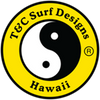Spotcheck Sandys
 Every year millions make the trek beyond the busy streets of Honolulu to the remote Southeast side of the island for its rugged beauty, windswept beaches and plunging sea cliffs. Island treasures like Makapu’u, Hanauma Bay, and Halona Blowhole line the winding coastline, attracting tourists and locals year ‘round. But a trip to this side of the island would be incomplete without a stop by Sandy Beach. Nestled beneath Koko Crater lies the small stretch of beach, wreathed in a salty haze with glistening sand and ferocious shorepound.
Every year millions make the trek beyond the busy streets of Honolulu to the remote Southeast side of the island for its rugged beauty, windswept beaches and plunging sea cliffs. Island treasures like Makapu’u, Hanauma Bay, and Halona Blowhole line the winding coastline, attracting tourists and locals year ‘round. But a trip to this side of the island would be incomplete without a stop by Sandy Beach. Nestled beneath Koko Crater lies the small stretch of beach, wreathed in a salty haze with glistening sand and ferocious shorepound.
You’ll find Sandys at the top of any list for most dangerous beaches in Hawai’i. Year after year, Honolulu lifeguards make more rescues at Sandy Beach per beach user than at any other beach they guard. Many visitors misjudge the dangers of the shorebreak. Days when the waves are small and approachable can be just as dangerous and misleading to the inexperienced swimmer. Even ocean experts who have surfed Sandys for years have fallen victim to the unforgiving wave.
 Beyond the infamous shorebreak you’ll find one of the most dynamic surf breaks on the island, suited for everything from longboards, shortboards, bodyboards, or no board at all. It picks up swell from a multitude of directions but favors waves from the Southwest to Southeast. To the East you have Full Point, a grindy left hander where longboarders gravitate toward. Further inside, shortboarders and bodyboarders share the peak over the shallow sections at Half Point and into Pipe Littles. But the main attraction at Sandys is it’s heaving shorepound. The unsuspecting wave breaks abruptly over hard packed sand in very shallow water. This gave the place the nickname “Broke Neck Beach.”
Beyond the infamous shorebreak you’ll find one of the most dynamic surf breaks on the island, suited for everything from longboards, shortboards, bodyboards, or no board at all. It picks up swell from a multitude of directions but favors waves from the Southwest to Southeast. To the East you have Full Point, a grindy left hander where longboarders gravitate toward. Further inside, shortboarders and bodyboarders share the peak over the shallow sections at Half Point and into Pipe Littles. But the main attraction at Sandys is it’s heaving shorepound. The unsuspecting wave breaks abruptly over hard packed sand in very shallow water. This gave the place the nickname “Broke Neck Beach.”
Despite this apparent danger, Sandys was instrumental in progressing and propelling the sport of bodysurfing in the 60s and 70s with pioneers like Boots Matthews and Mark Cunningham, and bodyboarding in the 80s and early 90s with legends like JP Patterson, Keith Sasaki, Pat Caldwell, Kavan Okamura and Mike Stewart. It was a gathering place for outer island talent like Stewart and a hotbed for the progressive bodyboarding scene.
 To this day Sandys remains a melting pot for bodyboarders, surfers, bodysurfers and those just wanting to get away from the concrete jungle of town, pull up their cars to the sand’s edge and enjoy the beach.
To this day Sandys remains a melting pot for bodyboarders, surfers, bodysurfers and those just wanting to get away from the concrete jungle of town, pull up their cars to the sand’s edge and enjoy the beach.
Best Conditions:
The best months to catch waves on your shortboard or longboard are March through September when the south swells kick in. If bodyboarding or bodysurfing is your thing, you’re in luck, Sandys loves tradewind swell. With not many flat days to speak of, you can catch it pretty good almost year ‘round. The waves at Full Point and Half Point can be fickle. Finding the right combination of wind and swell direction is key. Prime conditions tend towards swell out of the East-Southeast combined with offshore wind from the Northwest.
Best equipment
For Half Point we recommend the Mini Beast model by Makani. It’s center-line volume with a tuned, tapered rail makes for easy paddle and acceleration while staying connected to the wave. It’s versatility allows for use by a novice or expert, in a variety of conditions from mushy to hollow.
For Full Point we recommend the Glide model by Tanaka. It’s a fast and maneuverable small longboard with a concave nose fading to a rolled vee in the center, to vee off the tail that allows for the board to carry its own speed but still turn on a dime.
For Sandys shorebreak we recommend the T&C Surf Mini Bodyboard. It’s a 21 by 14 inch bodyboard that is the perfect size to get you into the wave and will lighten your load while in the barrel.






Leave a comment